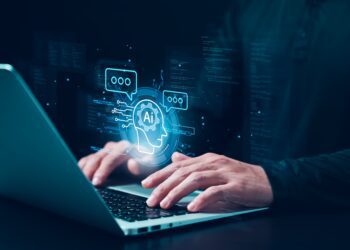In crisis conditions, resilience is a business necessity—and increasingly, a strategic weapon fueled by digital capabilities. BCG takes a deep dive on how this relates to technology.
For today’s businesses, the only thing that is certain is uncertainty. COVID-19 has cast a clear and somber spotlight on the urgent need for resilience and digital capabilities. More than ever, businesses must be able to react to sudden and dramatic changes—in their supply chains, in their customer interactions, in how and where their employees work. But many companies simply aren’t there yet.
That’s a problem not only for immediate responses to COVID-19 but also for the longer-term future. Expectations for businesses, employees, and consumers have shifted with remarkable speed. Although the situation is evolving very differently across geographies and industries, one common theme recurs: the need to sense and shape the new reality. What will it take to compete going forward? Three elements are key: a relentless focus on the outcomes that matter; new ways of working; and savvy use of digital and technology.
This isn’t a secret recipe. Digitally mature companies embrace all of these principles, and our research shows that they significantly outperform digital laggards. They’re what we call bionic companies, blending human and technological capabilities to achieve superior outcomes. These companies spark innovation, efficiency, and growth. They have better visibility into their businesses and can more quickly make the radical changes that crises demand. Fundamentally, they are more resilient.
To help companies prepare for the new reality and develop the necessary resiliency, we have developed an approach that centers on four key imperatives: ensure business continuity, reset the investment portfolio, future-proof the tech function, and build adaptable data and digital platforms. The steps involved in this approach may not seem like transformation as usual—but as COVID-19 has made all too clear, it’s no longer business as usual, either.
Digital and AI maturity bring greater resilience
In a crisis, businesses must quickly answer and address some critical questions. What’s selling? How do we best interact with customers? Where are the trouble spots in our supply chain? How do we support employees who are working from home? In the COVID-19 crisis, many companies have struggled with their assessments and responses.
Already, we’ve seen that digitally mature companies can reap a performance dividend. In a BCG study of more than 200 companies, digital leaders achieved 1.8x higher earnings growth than digital laggards—and more than double the growth in total enterprise value. We also found that digital leaders channel a larger share of investment to areas such as AI as well as to reskilling, upskilling, and new ways of working. Our findings suggest that these companies are best situated to realize a “resiliency dividend” as well, by leveraging technology and digital capabilities to steer their business in real (or near-real) time, thereby strengthening their position in the midst of a crisis.
That resiliency could have important consequences in the global arena. Our study found that, overall, Asia—led by Chinese companies that act as the digital engine for the region—had the highest level of digital maturity. In the wake of COVID-19, Chinese companies are likely to accelerate their recovery at a pace that competitors in Europe and the US can’t match.
Ensure business continuity
Technology plays a major role in keeping things running during a crisis. But many of the steps that you take out of necessity will create new opportunities and lasting efficiencies. So you need to think along two tracks: prioritizing a rapid response to the disruption and change that you face right now; and fast-tracking initiatives that will help sustain business continuity.
The rapid response will ensure employee safety and identify immediate gaps and fixes. Generally this means adapting core infrastructure to support remote working and digital collaboration tools (and ratcheting up cyber resilience, as the larger number of people working from home leads to an increase in cyber threats). For many companies, it also means facilitating digital delivery to customers who can no longer visit physical locations and implementing technology in order to improve communication with employees and to comply with relevant health and safety measures. A digital war room approach can be invaluable here, assisting you in orchestrating and coordinating crisis management.
Reset the investment portfolio
After tackling the immediate issues of business continuity, you should start looking down the road. Crises tend to have common consequences: business needs change, the mantra becomes ‘do more with less,’ and necessity drives a heightened level of innovation. Financial pressure often forces companies to reduce resources and yet accelerate value creation. Those dynamics might seem at odds with each other, but a savvy examination or reset of the IT/tech project portfolio can mitigate the impact of the crisis and lay the foundation for a faster, more successful recovery.
Now is the time to adjust priorities on the basis of value and cost. Most companies have seen their business context shift dramatically as a result of the pandemic, and they should shift their investments accordingly. This means focusing spending on near-term business outcomes and enterprise digital capabilities. And it means moving quickly.
A typical traditional project portfolio prioritization takes several months and requires the involvement of many stakeholders. But the COVID-19 crisis calls for a more focused approach. A small committee that maintains a laser focus on business value and pressing topics (such as remote access for employees, robust digital channels, and data analytics to improve forecasts and supply processes) should be able to complete the triage in two sprints of two to three weeks each.
In conducting the triage, the committee should pay special attention to four groups of projects:
- Digital Projects. Many digital projects are not delivering value. Others originated in a business environment that no longer exists. In the reset, the focus should be on a few high-value digital projects that are critical to ensuring cash flow and to rebounding. Examples may include new online distribution channels, dynamic pricing, and projects to leverage data and analytics for sales steering.
- Long-Term Projects to Replace Legacy Platforms.Most companies have at least one major system replacement project in progress—for example, enterprise resource planning (ERP) or customer relationship management. Programs that are near completion should continue, but those with a longer time horizon should be subject to careful review, with two critical questions in mind. First, does the project generate real business value, and can planners accelerate value generation (for example, by breaking down the project into a series of smaller initiatives that deliver value in the short to near term)? Second, can planners reduce the project’s run rate and future operating cost (perhaps by adjusting vendor incentive schemes to create more “skin in the game” on their side)?
- Projects That Enable the Workplace of the Future. The ability to support remote working on a large scale is no longer optional. Many organizations have a patchwork of projects in the works to upgrade user devices, establish collaborative platforms, renew video conferencing capabilities, and so on. It is time to consolidate those efforts in order to accelerate delivery and ensure adherence to the latest cyber and IT security standards.
- Business-Critical Projects. Strategies inevitably change during a crisis, so it’s crucial to examine projects from a strategic perspective. If they remain mission critical, continue them. If not, consider ways to retime and adjust them—for example, by temporarily reducing the team size to reduce your burn rate while protecting the knowledge capital you’ve built up. Some existing goals, such as expanding digital channels, may become more important than ever, raising the standing (and potentially changing the timing) of related projects. Regulatory projects should continue, too; but evaluate their nonregulatory parts (if any), and consider whether to postpone them.
Future-proof the tech function
Resiliency is also about how you work and what skills you can draw on. Digital and technology talent is a critical asset, and the COVID-19 crisis has reinforced that reality by sparking rapid change in business needs. But the crisis has changed the playing field, too, as budgets and priorities shift. In short, it’s time to retool your tech talent strategy. The key is to make your adjustments as precisely as possible, using a three-prong approach: pivot, accelerate, and stop.
- Pivot. You’ll want to build off your existing talent plans to emphasize future-ready capabilities and to support business strategies while reducing costs. The top two pivot levers in this regard are sourcing and location.
- Accelerate. You should also accelerate efforts that build key skills, capacity, and efficiencies. At the top of the list are talent plans for digital, AI and analytics, the cloud, and cyber resilience. Now more than ever, mastering the fundamentals of digital transformation and company data is a source of competitive advantage. So in addition to insourcing critical expertise and hiring top talent, you’ll want to double-down on training and upskilling the people who know your company best: those who already work for it.
- Some things need to halt. In our experience, between 25% and 60% of the tech workforce is involved in indirect activities—coordination and other steering and administrative tasks—that are redundant or don’t create independent value. By drawing up a map of current roles, skills, and activities you can zero in on activities to eliminate. This will enable your workforce to focus on value-generating tasks, generating real efficiencies.
Build scalable and adaptable data and digital platforms
Resilience requires adaptable technology and rapid access to data. Digital champions have shown the way here: when you foster agility and data-driven decision making, you gain more immediate visibility and insight into your customers and processes. As a result, you can respond faster to evolving situations. The problem is that many large companies are long on ambition but short on tangible value creation. They often pursue large-scale modernization of their core business systems, which will only start yielding tangible rewards or increasing adaptability several years down the road.
A better approach focuses on three key pillars: incrementally and pragmatically accelerate data use cases that drive business outcomes; build a robust data layer; and modernize your architecture with targeted investments. The idea is to identify how to use data to meet critical near-term needs and then to implement those use cases while building toward your modern technology North Star. That way, instead of waiting for the grand unveiling, you begin seeing the benefits and creating key capabilities early on.
At the center of this approach is a modular data and digital platform (DDP)—a unified architecture that combines applications, technologies, and data to permit rapid, at-scale implementation of business use cases. Crucially, the DDP decouples or “liberates” data from the underlying applications, creating a separate content layer that facilitates data usage and storage. This makes it easier to develop digital services as needed.
The DDP also lets you decouple high-value use cases from the transformation of your core legacy IT. This unlinking is extremely important. Many companies suffer slowdowns from the hundreds or thousands of systems they have added to the mix over many years. These fragmented environments are not conducive to rapid change or resiliency. A DDP enables you to rapidly deliver the business outcomes that matter most (whether they boost revenue, reduce costs, or support new ways of working). And in parallel, you transform your legacy environment.
Crises work on their schedule, not yours. And they are relentless, sowing uncertainty and disrupting everything in their path. In crisis conditions, resilience is a business necessity—and increasingly, a strategic weapon fueled by digital capabilities. While other companies tread water, or worse, you can support employees, adapt to changing circumstances, and accelerate recovery. Uncertainty will remain long after the COVID-19 crisis has passed, but you can be ready for it—and you can react quickly and flexibly to whatever conditions arise.












